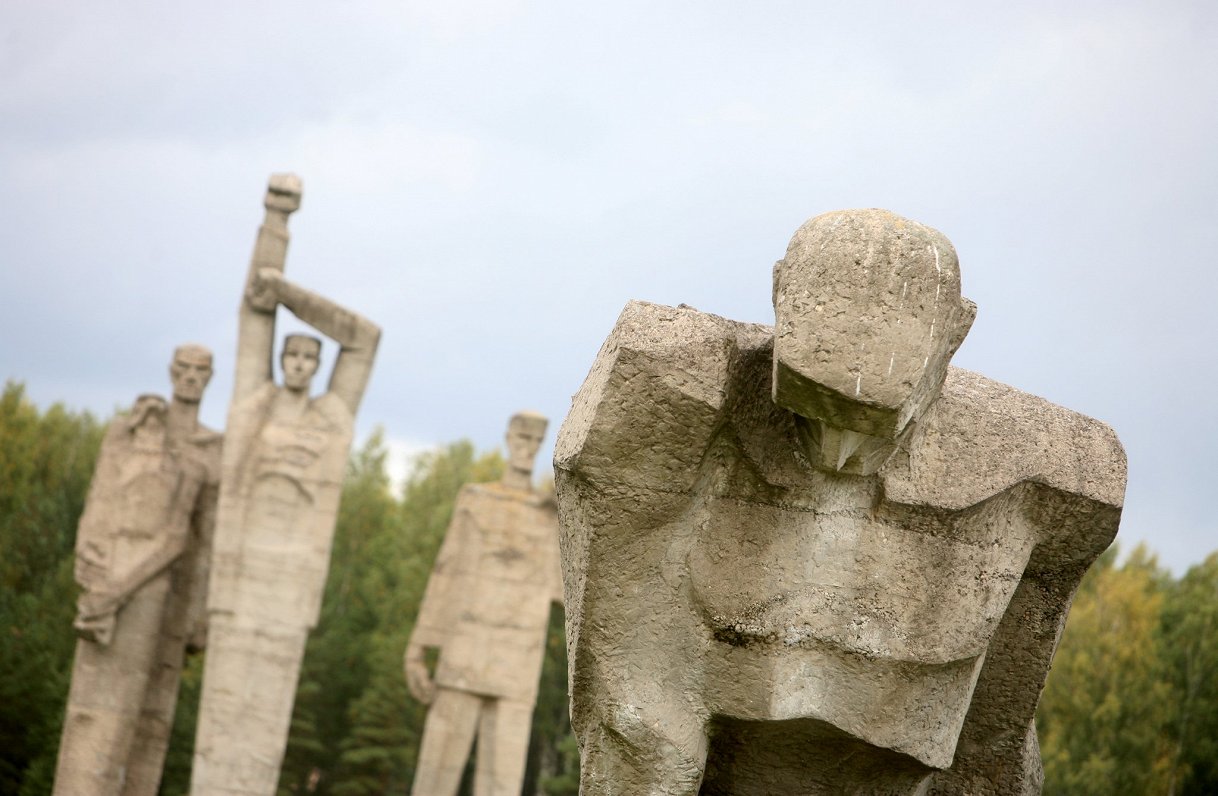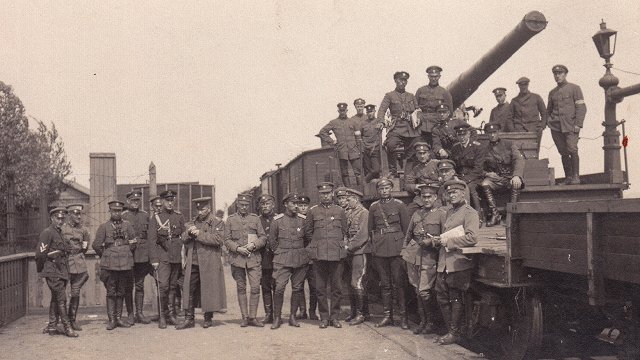Symbolizing the threshold between life and death, a hollow concrete wall that houses an exhibition stretches for some 100 meters at the memorial entrance. Behind the 12-meter gates, there lies a field suggestive of a meadow. The Salaspils camp was set up there by the Nazis in the Second World War, and six monumental sculptures in concrete are standing there now.
During the Nazi occupation in summer 1941, Jews were deported to this location, which lies some twenty kilometers southeast from Rīga. They were put to work in constructing “an extended police prison” and a “labor correctional camp”. The camp, which had a barbed-wire fence, housed political prisoners and POWs, as well as Jews, enslaved laborers and children of the repressed and the murdered. For most of the people who ended up there Salaspils was but an intermediary station before they were sent to other concentration and death camps.
Before the camp was disbanded in late 1944, about 23,000 people had been imprisoned there. At least 2,000 of them died there, but the exact number of victims is unknown. The Soviets estimated that there were more than 50,000 people who passed through Salaspils. More recent authors are making earnest attempts to refute this ideologically misrepresented depiction of history and dispel old myths that the locals subscribe to to this day.
There is little left of the former camp at the place. The concrete constructions of the 1967-built memorial mark the locations of the barracks and the executions. A metronome shoots through the silence on the location, symbolizing the victims’ heartbeats.
For more on the history of the place and the memorial, see this feature from our archives.
The German Traces series was first published as part of the Goethe Institut in Rīga project “German Footprints in Latvia” ("Vācu pēdas Latvijā" www.goethe.de/vacu-pedas). The linked mobile application "German Footprints in Latvia" can be downloaded at www.ej.uz/vp-iOS and www.ej.uz/vp-Android.



























